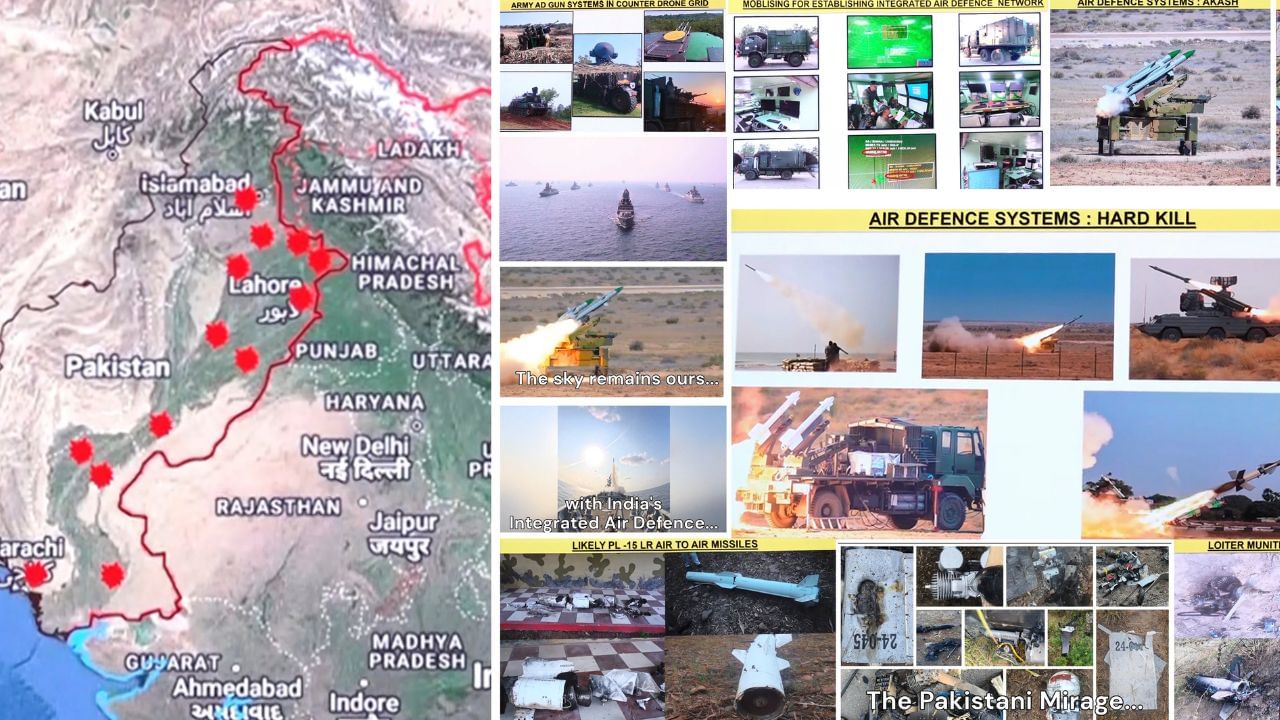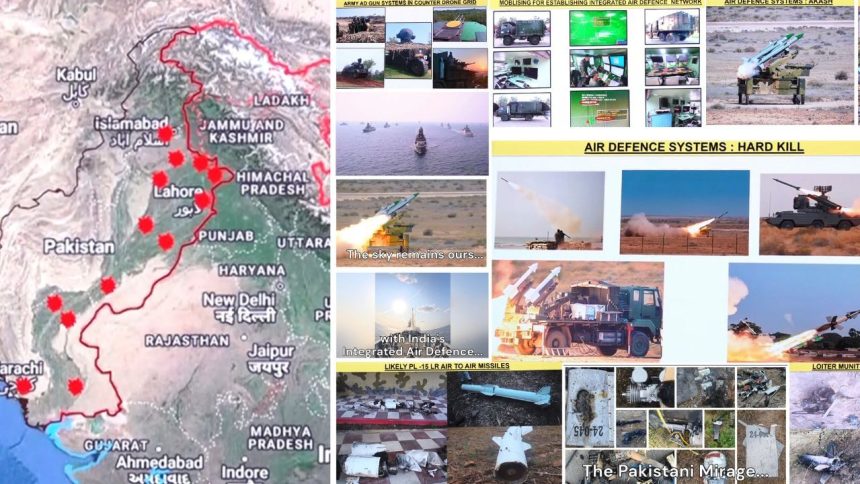
New Delhi: Over three days of intense hostilities, India’s integrated air defence (AD) network successfully neutralised a barrage of aerial threats, including Turkish drones, Chinese-origin missiles, and Pakistani munitions, top military officers said in a high-level media briefing on Monday.
Director General of Air Operations, Air Marshal A K Bharti, said that “India’s sky remains ours”, crediting the multi-layered defence grid for repelling sophisticated assaults. “Whether it’s a Turkish drone or anything else, it fails in front of Indian technology,” he said.
“All our military bases, all our systems continue to remain fully operational. They are ready to undertake any future missions should the need arise,” Air Marshal Bharti added.
Chinese missiles and Turkish drones in spotlight
For the first time during this round of hostilities, India publicly named China as a supplier of weapons used by Pakistan, a major shift in diplomatic signalling. Remnants of the Chinese PL-15 missile were recovered from Hoshiarpur in Punjab. These missiles, fitted on Pakistan’s JF-17 Block III and J-10CE fighters, reportedly have a downgraded export range of 145km far less than the 300–500km capability of the version used by the Chinese military.
“The PL-15 has proven to be ineffective against our defences,” said an official.
Pakistan’s use of Turkish drones, including the Bayraktar Akinci Yiha and Byker YIHA III kamikaze drones, also drew attention. India had initially named only Turkish weaponry, but has now expanded its official disclosures to include Chinese-origin arms.
High-tech arsenal
Among the intercepted weapons were Chinese PL-15 long-range air-to-air missiles, Turkish-origin Bayraktar Akinci Yiha drones, Asisguard Songar kamikaze drones, loitering munitions, long-range rockets, and quadcopters. The Armed Forces said that most threats were shot down by India’s air defence systems, and the few that breached the shield caused only minimal damage.
Lt General Rajiv Ghai, representing the Army, and Vice Admiral A N Pramod from the Navy, echoed the Air Force’s assessment. “Whenever the Pakistan Air Force attacked us, it failed in front of our AD grid,” said Lt Gen Ghai.
Integrated defence in action
India’s integrated air command and control system (IACCS), along with the Akashteer battlefield surveillance network, played a pivotal role in creating a real-time composite air picture. Weapon systems spanning from Russia’s S-400 Triumf missiles (380 km range) to Israel-co-developed Barak-8 missiles (70km), indigenous Akash SAMs (25-30km), and shoulder-fired Igla-S missiles (6km) formed a seamless layered defence.
“Another highlight has been the stellar performance of indigenous AD weapons like Akash,” said Air Marshal Bharti. India has already inducted the majority of its 15 Akash-1 and 2 squadrons, worth Rs 10,900 crore, while the Army operates four regiments valued at Rs 22,340 crore. A new-generation Akash with a 30km range is in final trials.
Older systems such as Pechora missiles, OSA-AK-M (10km), and L-70 anti-aircraft guns (3.5km) also saw successful deployments. On May 8 alone, India’s L-70 and ZU-23-2 guns destroyed over 50 drones out of an estimated 300–400 launched by Pakistan.










